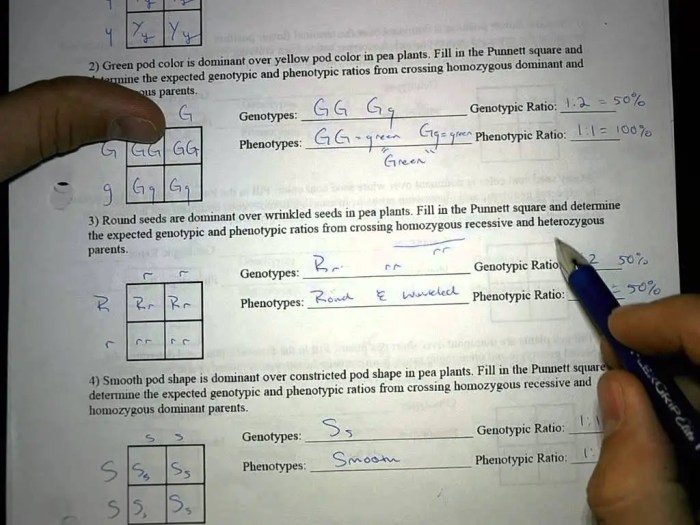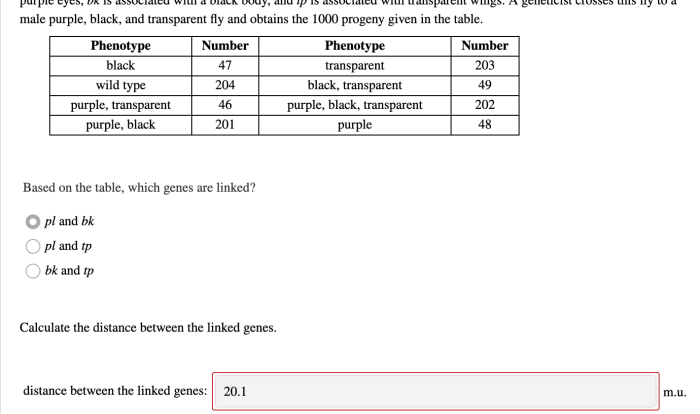Delving into the intricacies of genetics, the Pea Plant Punnett Square Worksheet Answer Key emerges as an indispensable resource. This meticulously crafted guide unravels the complexities of Punnett squares, empowering students and educators alike to navigate the fascinating realm of pea plant inheritance.
Within these pages, a comprehensive exploration of Punnett squares awaits. From their fundamental principles to their practical applications, this guide provides a thorough understanding of this essential genetic tool.
Pea Plant Punnett Square Overview

A Punnett square is a diagram that predicts the possible genotypes and phenotypes of offspring based on the genotypes of the parents. It is a valuable tool in genetics, allowing researchers to understand the inheritance of traits.
To create a Punnett square for pea plants, follow these steps:
- Identify the dominant and recessive alleles for each trait.
- Write the alleles of one parent along the top of the square and the alleles of the other parent along the side.
- Fill in the squares by combining the alleles from the top and side.
Punnett Square Analysis
Consider a Punnett square for pea plant height, where T represents the dominant allele for tall plants and t represents the recessive allele for short plants. If one parent has the genotype TT and the other has the genotype tt, the Punnett square will look like this:
| T | T | |
|---|---|---|
| t | Tt | Tt |
| t | Tt | Tt |
The results show that all offspring will have the genotype Tt and will be tall (dominant phenotype). The probability of getting a tall plant is 100%.
Key Concepts
Dominant:An allele that masks the expression of a recessive allele.
Recessive:An allele that is only expressed when homozygous.
Homozygous:Having two identical alleles for a gene.
Heterozygous:Having two different alleles for a gene.
Mendelian inheritance:The principles of inheritance proposed by Gregor Mendel, which explain how traits are passed down from parents to offspring.
Alleles:Different forms of a gene that occupy the same locus on a chromosome.
Extensions, Pea plant punnett square worksheet answer key
- Table of Genotypes and Phenotypes:Create a table summarizing the possible genotypes and phenotypes of pea plants for height, seed color, and pod shape.
- Punnett Square Problem Solving:Design a Punnett square to determine the probability of a pea plant with genotype TtYy producing offspring with genotype Ttyy.
- Predicting Trait Inheritance:Demonstrate how Punnett squares can be used to predict the inheritance of traits in future generations by considering a scenario involving two pea plants with specific genotypes.
Answers to Common Questions: Pea Plant Punnett Square Worksheet Answer Key
What is a Punnett square?
A Punnett square is a diagram that predicts the possible genotypes and phenotypes of offspring based on the genotypes of their parents.
How do I create a Punnett square for pea plants?
To create a Punnett square for pea plants, list the possible alleles for each trait along the top and side of the square. Then, fill in the squares with the possible genotypes of the offspring.
What is the probability of getting a homozygous dominant genotype?
The probability of getting a homozygous dominant genotype is 25%.


